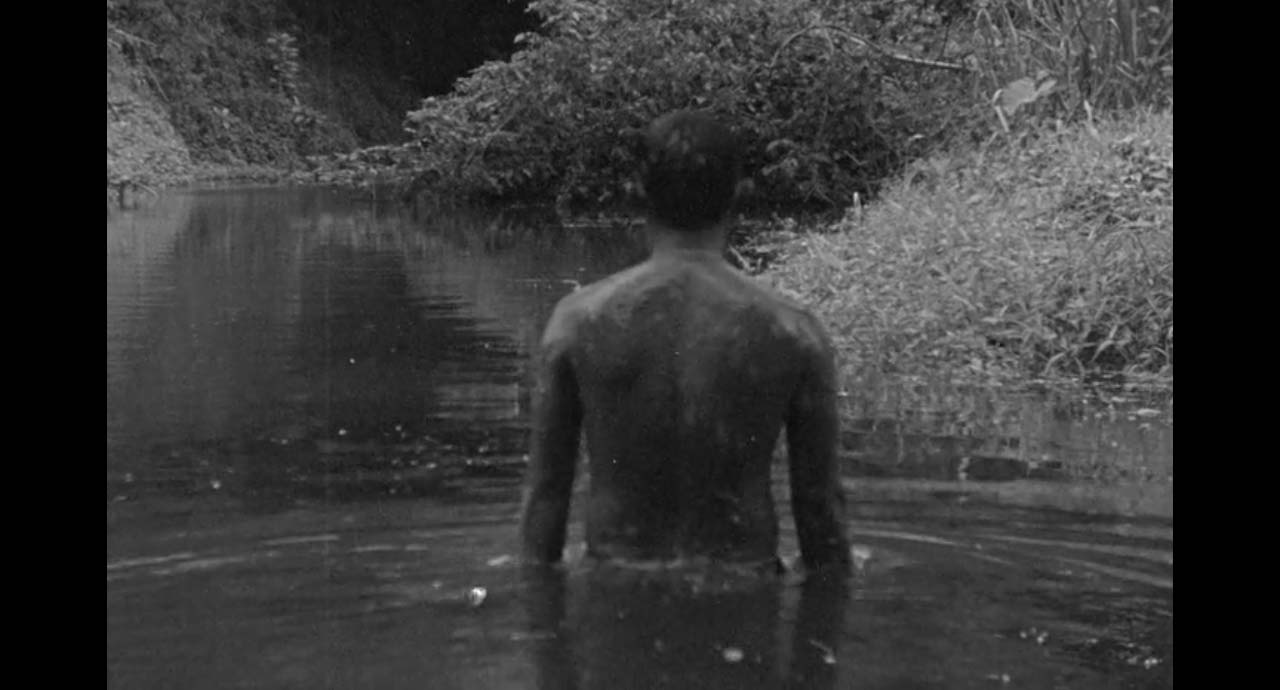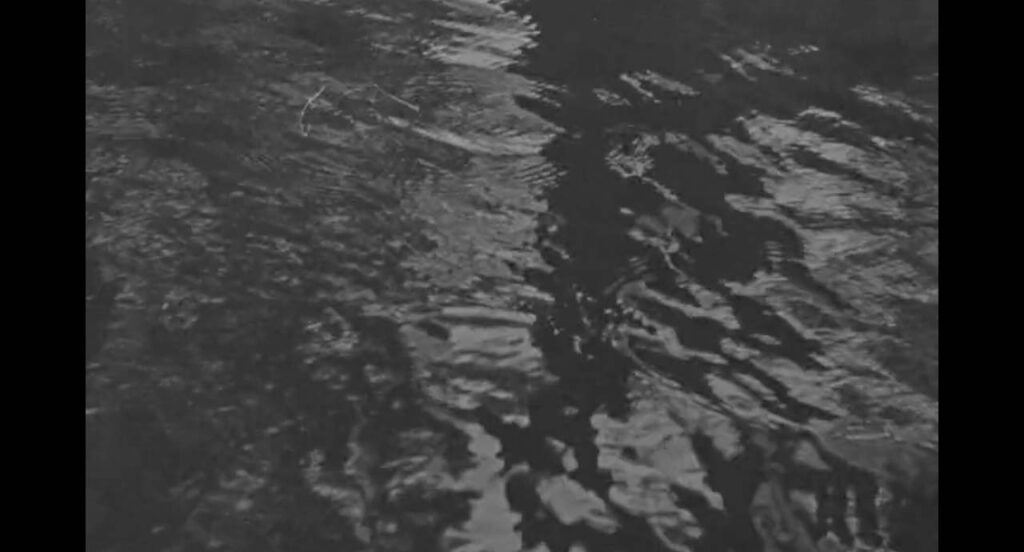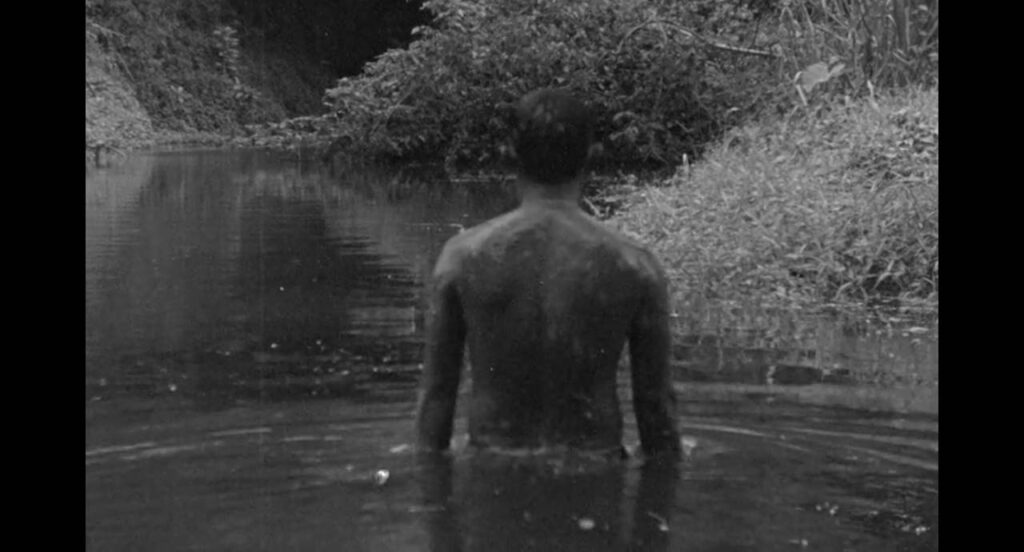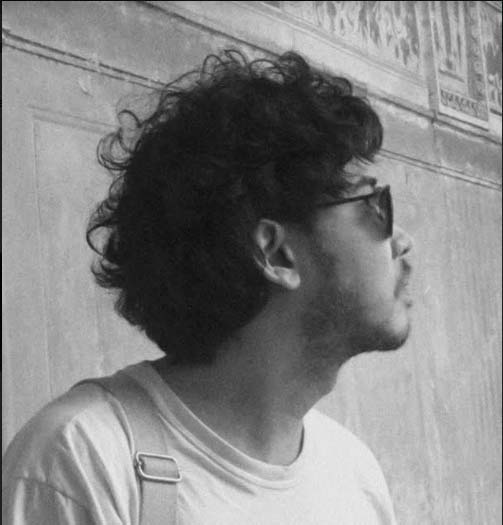“We are all made of those, who have built and broken us” – Atticus.
Mont Tesprateep lost a dear friend, which urged him to make this beautiful visual poem.
There is always a willingness to immortalize those who left us.
In ‘Song X’, we see the poetic journey of the protagonist who, as we interpret it, is waiting to be liberated from the world of the living. This journey can be encapsulated by the most powerful techniques, sound and visuals (footage and editing) used in the film, which reflects on the theme of waiting.
Having been shot on 16mm and 1.33 aspect as of the original silent films, this use of deteriorated footage, is a direct reflection of the protagonist’s hazy state of mind. An indication, perhaps of how since he about to leave the realm of living for good, his memories of the past are slowly depleting, leaving blank patches. It plays with the sense of nostalgia through the use of black and white coupled with the aspect ratio, giving it a sense time slipping away. As a viewer, we are looking through his eyes – feeling confused, helpless and even angry.
Water, as a representation of the state of limbo, reflects upon the mental and physical state of the protagonist. Considering the film as a visual poem illustrating the journey after death, the protagonist is stuck between life and death. This is similar to the souls contained in the “Asphodel Meadows”. A place wherein souls wander aimlessly since they balanced their good and bad while living and hence receive no punishment or prize, as per Greek Mythology. It’s an aimless journey, filled with contemplation and memories of the past, as we see him floating on the raft, lying down, sitting on the tree. The raft is a literal reference to the journey made into the underworld. He floats aimlessly in the beginning, after which we see a cremation, which leads to his dive into the water – a possible indication of a release.
The use of the heightened diegetic sound gives a sense of hyper reality to the viewers. Along with the natural sounds (frog, water, birds) it is followed, by the sudden loud sound of the crickets, then metallic sounds, which persist throughout the film. It is almost as though a battle ensues between the natural and the artificial, creating a sense of disturbance and unrest during the cremation. It signifies the friction created between the living and dead since the protagonist is walking on earth. The dive into water, post- cremation, with drumbeats in the background, signifies his release from world of the living, drumbeats standing for “delightfully conducting the funeral” by the villagers as the filmmaker mentions.
Mont Tesprateep’s intricate use of transitions and cuts also heightens the viewing experience for the audience. The use of water in transitions indicates the protagonist’s journey along the river and its moving currents, reflecting back to the idea of a purposeless journey.
The carefully timed cuts between scenes also give viewers a sense of non-linearity. This, coupled with the use of cross fades between contrasting shots, results in a depiction of blurred, overlapping memories and recollections that are reminiscent of transitions used in old film reels. Invoking thus, the sense of nostalgia.
It is a strenuous task to piece together a story, let alone a visual poem, that too, experimental in nature. Song X is not abstract; it is well knit together. The several pieces, supporting one another and creating a beautiful structure that makes you feel a sense of nostalgia and loss.
Interview with Director, Mont Tesprateep
‘Song X’ incites feelings in a way that is least expected, it deals with emotions that dwell within every one of us, but we are afraid to confront them.Intrigued by this wonderful visual poem, we were keen on knowing more and understanding the work better.
Sheoli: What did you intend for the soldiers in the film to represent?
Mont Tesprateep: I was raised in a military family during the late cold war tensions, when The Royal Thai Army started to be the most powerful state agency with the support of the US for the anti-communism. I was always surrounded by service soldiers working in my house. Then, my father became a high-ranked army officer and after retirement, he worked in a military government after the coup d’état in 2006.
I have often heard that some soldiers had fled from my house or the camp after which they were tortured by the commanders. However, I have never known the truth until recent years, when I saw some video leaked on YouTube about so many soldiers around the country that have been beaten up or killed when they are out of the line or during the training and hazing. Unfortunately, no one can accuse the military. I make Song X to dedicate to the soldiers who used to work at my house and those who have been killed.
Kieron: The sound serves as a bridge between the visuals. To us, it heightens the viewer’s senses. Was that your intended purpose or is there another idea behind this?
Mont Tesprateep: Yes, somehow I love senses of silent cinema. There is no dialogue in my films, however, sound is very important to me, I try to employ the Foley sound as sound design rather than imitating the real action.
Kieron: What was the idea behind choosing a forested location? Does it perhaps reflect on the main character’s state of mind or thoughts?
Mont Tesprateep: I had always wanted to make a film shot by a creek in a remote location. For this film, it is a journey of a spirit through the flow of water. I think about the last process of funeral ceremony in Thailand – the scattering of ashes over the sea / river. For me, basically I love to make films that are open to interpretation. There is no specific reflection of the character’s mind but it is related in a way.
Sheoli: Lastly, we were curious as to why the film is treated in black and white on a deteriorated roll of film? For you, did the use of this treatment also help to establish the idea of life after death?
Mont Tesprateep: Yes, for me, the deteriorated film stock can support the idea of life after death. Since 2014, I have been working on a series of hand-processed 16mm and S-8 short films focusing on the theme of ‘e-s-c-a-p-e’. In addition, I want to make a low budget film but shoot it with celluloid. In Thailand there is only a lab left and it is very expensive. I get film stock donations from anybody who is willing and film schools. Some are good, some are expired. I decided to develop the film, by hand processing. Experimentation needs to be done to a certain level, with the film, before we start shooting. I also love materials that have a sense of uncertainty. The hand-process can make unintentional scratches. They can create some extra rhythm for the visual.
My recent work: ‘Endless, Nameless’ (2014) is the first work of the series that I focus on ideas of authority, fear and hypnosis. The film is an attempt to reconstruct my 20 years of memories about groups of serviced soldiers who worked and in my father’s garden. I consider this work as a hypnotherapy for myself to recollect scattered memories regarding to conflicts of being in the family and to compare the past to the current of political situation.
Catch Song X on 1st December 2017, 7:00pm at the National Gallery as part of the Southeast Asian Short Film Competition.






